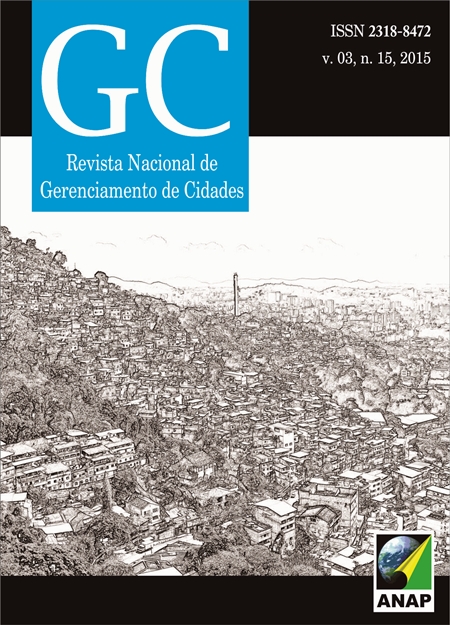TAV RIO – CAMPINAS: DESENVOLVIMENTO REGIONAL ATRAVÉS DE MOBILIDADE INTERURBANA SUSTENTÁVEL
DOI:
https://doi.org/10.17271/231884723152015992Resumo
É perceptível a saturação dos sistemas de transporte de passageiros a médias e longas distâncias entre cidades brasileiras, onde a sobrecarga reside no modo aéreo e rodoviário, principalmente nas grandes regiões metropolitanas. O presente trabalho tem, como objetivo, contextualizar e promover reflexões sobre a implantação do sistema TAV no eixo Rio – São Paulo – Campinas, e possíveis impactos sobre o desenvolvimento urbano regional através desse modo de transporte. São apresentadas vantagens do TAV em relação às questões econômicas e socioambientais, além de pontualidade e segurança. Há incertezas que aconselham cautela, mas, ao mesmo tempo, a necessidade de novas alternativas de transporte de passageiros traz, através do TAV, uma possibilidade de melhoria no problema de saturação do transporte no corredor em si, com a perspectiva de se promover o desenvolvimento regional das cidades envolvidas no traçado, baseado em análise no histórico de implantações e operações em outras cidades do mundo.
PALAVRAS-CHAVE: Trem de Alta Velocidade. Ferrovias. TAV. TAV Rio – Campinas.
TAV RIVER - CAMPINAS: REGIONAL DEVELOPMENT THROUGH SUSTAINABLE MOBILITY LONG DISTANCE
ABSTRACT
The saturation of passenger transport systems for medium and long distances between cities in Brazil is clear. There is an overload on the air and road transport systems, especially in large metropolitan areas. The current work has the objective of promoting and contextualizing reflections on the implementation of the High Speed Rail system along the Rio – Sao Paulo – Campinas axis and the possible impact on the regional urban development. There are many advantages of HSR system in relation to environmental issues, safety and punctuality. There are uncertainties that point to caution, but at the same time, the need for new alternatives for passenger transport which the HSR system makes possible brings an opportunity to improve the problem of transport saturation between those cities, with the perspective of promoting regional development along the route, based on the analysis of the implementations and operation historic in other cities of the world.
KEYWORDS: High Speed Rail System. HSR. HSR Rio – Campinas. Railways.
TAV RIVER - CAMPINAS: DESARROLLO REGIONAL A TRAVÉS DE LA MOVILIDAD SOSTENIBLE LARGA DISTANCIA
RESUMEN
Es perceptible la saturación de los sistemas de transporte de pasajeros, a mediana y larga distancia entre ciudades brasileras, donde la sobrecarga se encuentra en el medio aéreo y de transporte por carretera, principalmente en las grandes regiones metropolitanas. El presente trabajo tiene como objetivo contextualizar y promover reflexiones sobre la implantación del sistema TAV en el eje Rio-San Pablo-Campinas, y los posibles impactos sobre el desarrollo urbano regional, a través de este modo de transporte. Se presentan las ventajas del TAV en relación a los aspectos económicos y socioambientales, además de la puntualidad y la seguridad. Hay incertidumbres que recomiendan cautela, pero al mismo tiempo la necesidad de nuevas alternativas de transporte de pasajeros trae, a través del TAV, una posibilidad de mejoría del problema de saturación del transporte en el corredor mismo, con la posibilidad de promover el desarrollo regional de las ciudades involucradas en el trazado, con base en el análisis histórico de implantaciones y operaciones en otras ciudades del mundo.
PALABRAS CLAVES: Tren de alta velocidad. Ferrovías. TAV. TAV Rio-Campinas.














